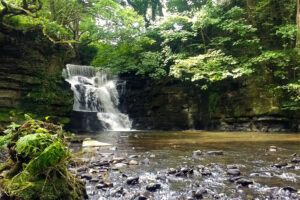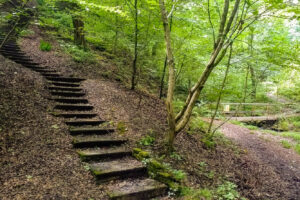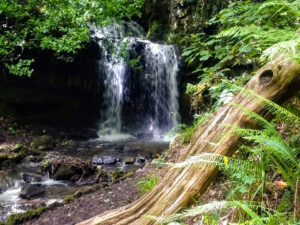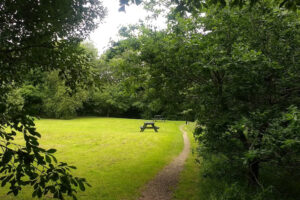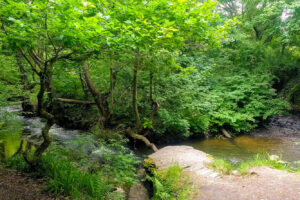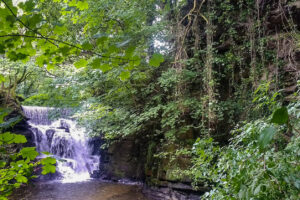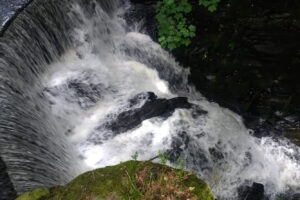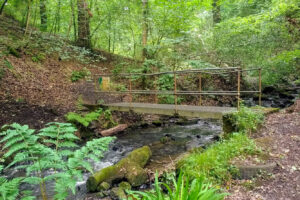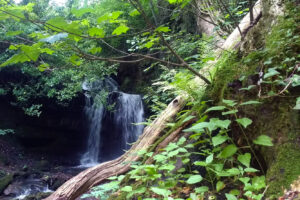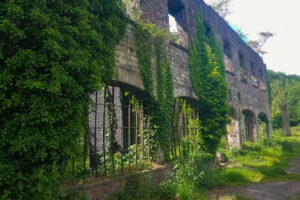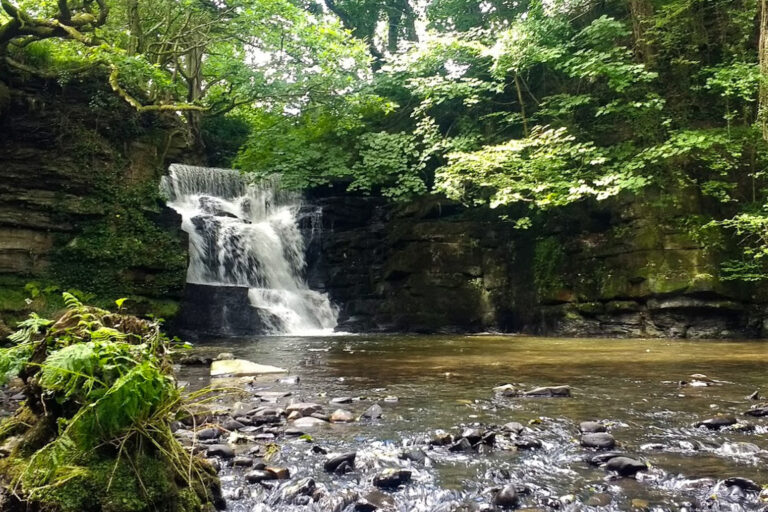About
On entering the local suburb of Neath Abbey you may be surprised to learn of this beautiful and historically important place. Hidden in a natural wooded valley between residential housing estates, it is certainly not immediately obvious to visitors. To access the site, there is a network of footpaths from Longford Road and Taillwyd Road into the wooded valley through which the River Clydach passes. This is a pleasant area, and contains the ruins of a number of stone buildings, and two waterfalls. The large buildings near the waterfall was water-powered forge with an iron roof cast at the works in 1825. The building was later used as a woollen mill. The machinery was removed to the Swansea Maritime and Industrial Museum. The first waterfall is easy to find, just follow the roaring sound of water. For the second you will need to head up stream, past a large clearing with picnic tables and follow the path which branches left. This path traverses a small river several times via metal bridges through a ravine. Its about a 10 min walk to the end where the second waterfall is located. Towering above the valley is the impressive Neath Abbey Viaduct following the paths under the viaduct in a downstream direction you will find the remains of the Iron Works furnaces and the engine works building. Established in the eighteenth century, notable surviving structures including two superb blast furnaces dating from 1793 built against a rock face for ease of charging, Ty Mawr, the ironmaster’s house of 1801 and the engine manufactory. The oldest surviving buildings are two stone-built blast furnaces (the original ones built in 1793) and the remains of workshops where the steam engines were constructed. The Ironworks finally closed in 1885 and today it is a Scheduled Ancient Monument. The furnaces are listed Grade II star and the workshops Grade II. The Future The Friends of Neath Abbey Iron Company are a local group who work to safeguard the site and provide public access. Some work has been undertaken to stabilise the structures including the removal of ivy. Considerable efforts are made to keep the pathways clear and several picnic benches can be found throughout the site.Photos
Neath Abbey Iron Works & Waterfalls
- No Reviews
